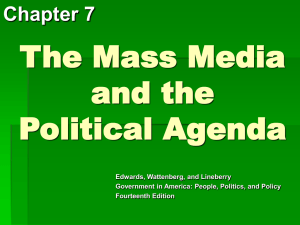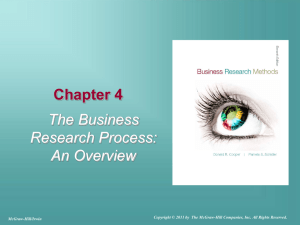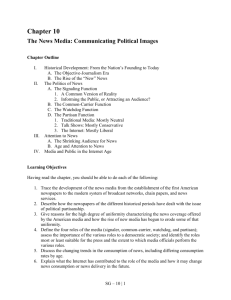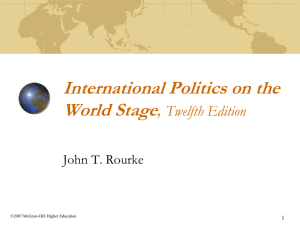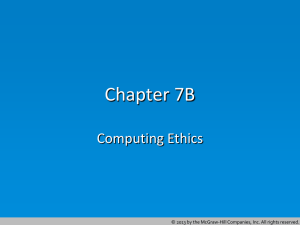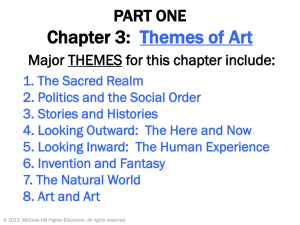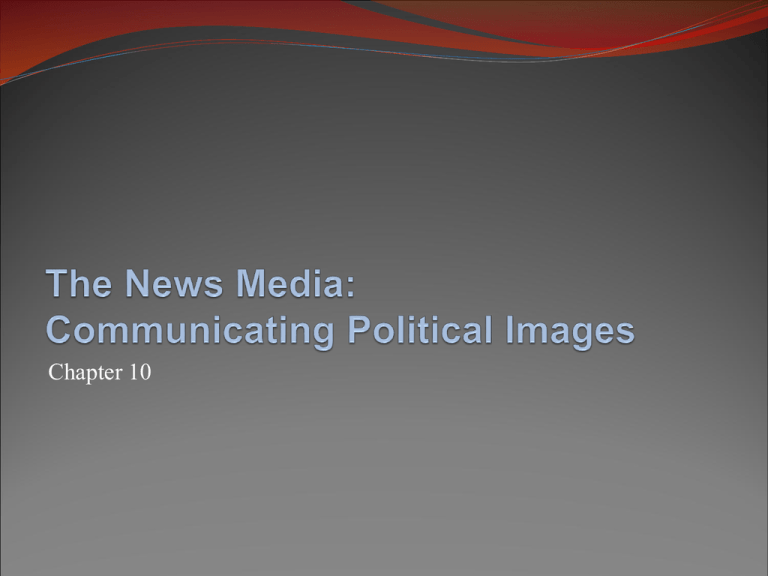
Chapter 10
Historical Development: From the
Nation’s Founding to Today
The objective-journalism era
Yellow journalism
Radio, the new mass communication system
The FCC and regulation
The Communications Act
© 2014, McGraw-Hill Education. All Rights Reserved.
2
Historical Development: From the
Nation’s Founding to Today
The rise of the “new” news
The end of the Fairness Doctrine
Cable news
CNN
Founded by Ted Turner in 1980
Chose to pursue a path of partisan neutrality
Fox News
Founded by Rupert Murdoch in 1996
Chose a partisan (conservative) format
© 2014, McGraw-Hill Education. All Rights Reserved.
3
Historical Development: From the
Nation’s Founding to Today
The rise of the “new” news
Partisan radio talk shows
Without the Fairness Doctrine, radio programmers were free to
move to a politically partisan format
Emergence of the Internet
Low-cost entry compared with other mass media
Some “new” news outlets a stunning success
The Drudge Report, Daily Kos, Instapundit
© 2014, McGraw-Hill Education. All Rights Reserved.
4
Journalism and Politics
The signaling function
Alert the public to important developments
U.S. media well-equipped to play this role
Performed by the traditional media
Wire services (AP, UPI, Reuters)
Daily newspapers
Television networks
© 2014, McGraw-Hill Education. All Rights Reserved.
5
Journalism and Politics
The signaling function
Agenda-setting of U.S. media results in similarity in
national news everywhere
News media are meant to inform the public, but also need to
attract an audience
Media focus on politics instead of policy
© 2014, McGraw-Hill Education. All Rights Reserved.
6
Journalism and Politics
The common-carrier function
Conduit for political communication
TV news has become more journalist-centered
Topics sometimes distilled to the “sound bite”
Framing: the way events are cast
Priming: the process by which a communicated message,
because of its content, activates certain opinions but not
others
© 2014, McGraw-Hill Education. All Rights Reserved.
7
Insert Figure 10-1
The Shrinking Sound Bite of Television Campaign Coverage
© 2014, McGraw-Hill Education. All Rights Reserved.
8
Journalism and Politics
The watchdog function
Objective journalism fosters watchdog reporting
Watergate
Watchdog function failures
Post-9/11 terrorist attacks
Internet has expanded watchdog capacity of media
© 2014, McGraw-Hill Education. All Rights Reserved.
9
Journalism and Politics
The partisan function
Traditional media: mostly neutral
Talk shows: mostly conservative
The Internet: mostly liberal
© 2014, McGraw-Hill Education. All Rights Reserved.
10
The News Audience
The partisan divide
Until the 1980s Americans had three TV networks
Huge daily audiences—newscasts varied only slightly
Viewers exposed to the views of both political parties
Patterns disrupted
Fairness Doctrine rescinded
The emergence of cable TV and the Internet
© 2014, McGraw-Hill Education. All Rights Reserved.
11
The News Audience
The information divide
More news outlets, yet viewers less informed
Fragmented news sources have led to partisan polarization
among audience
More news available, but alternate programming aids
avoidance of news
© 2014, McGraw-Hill Education. All Rights Reserved.
12





